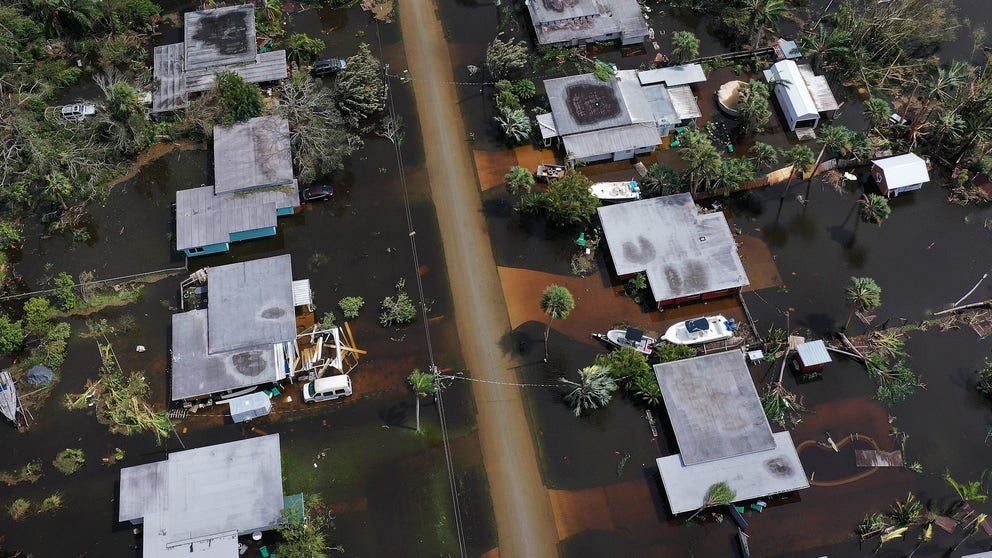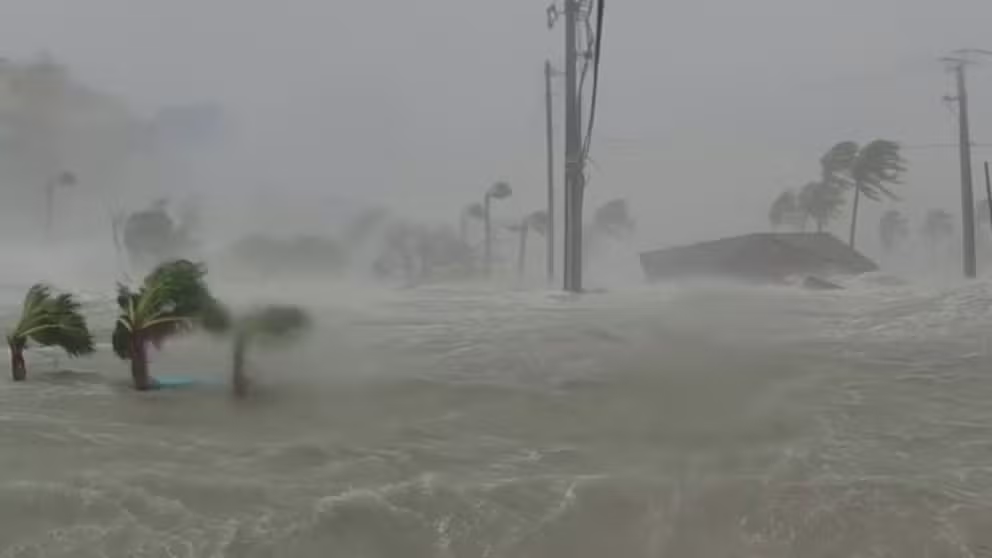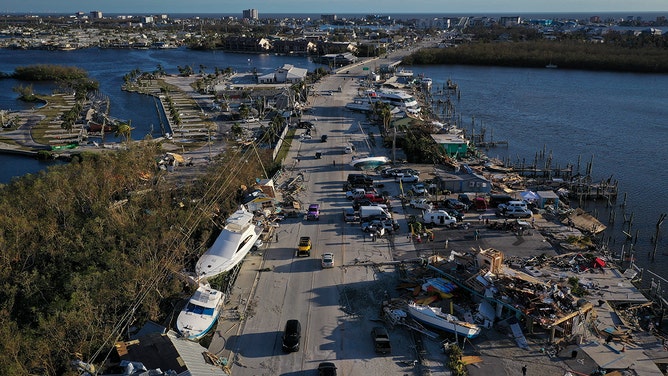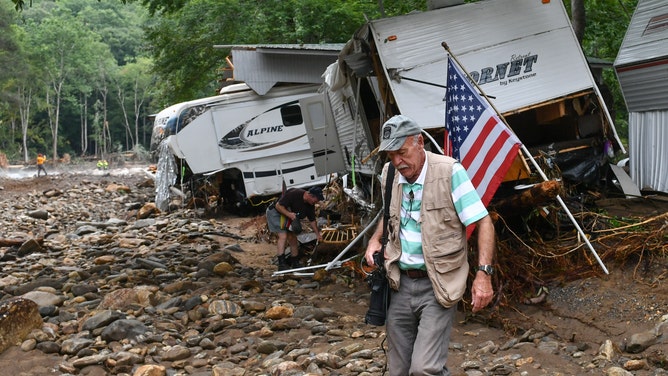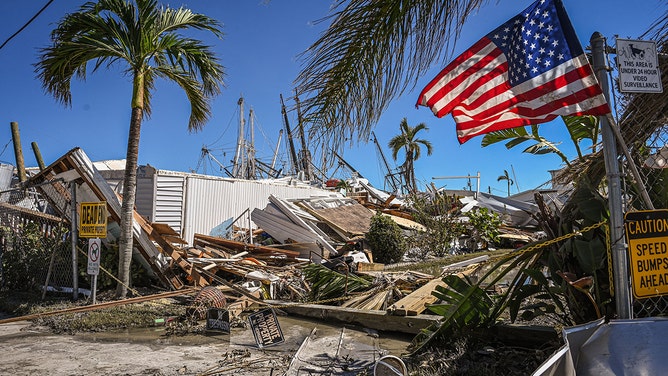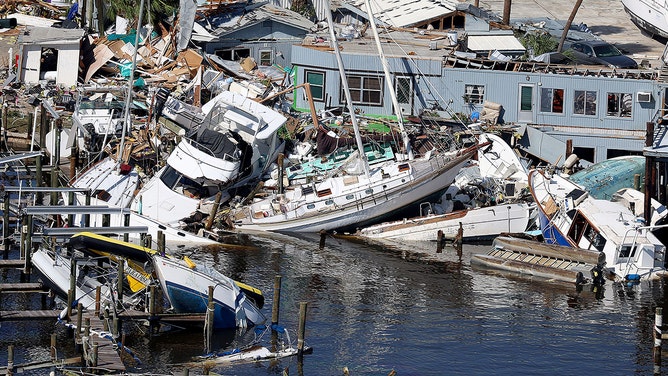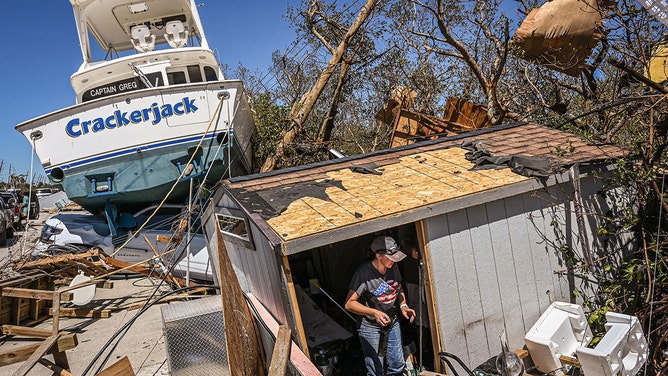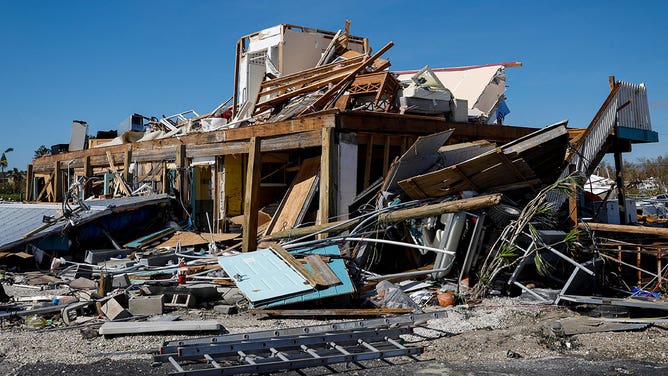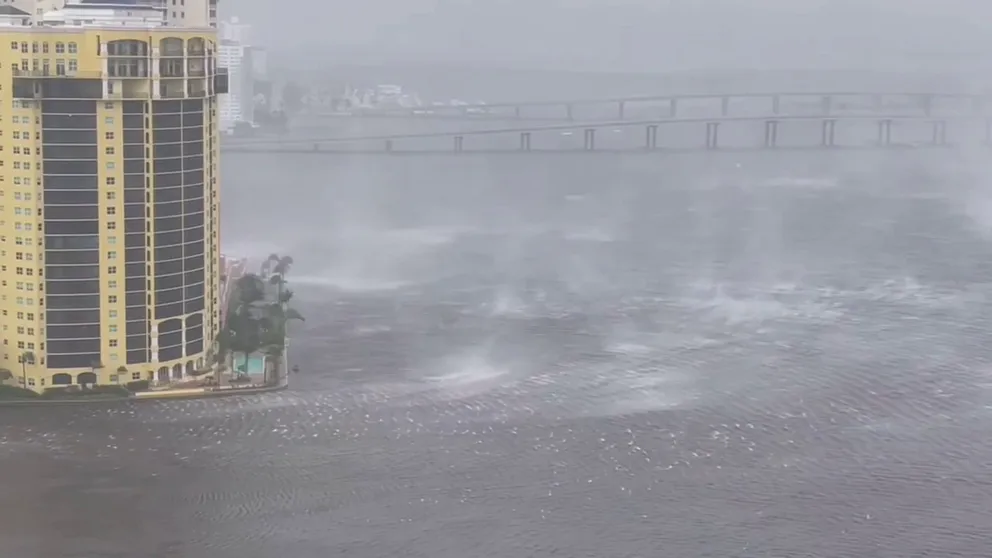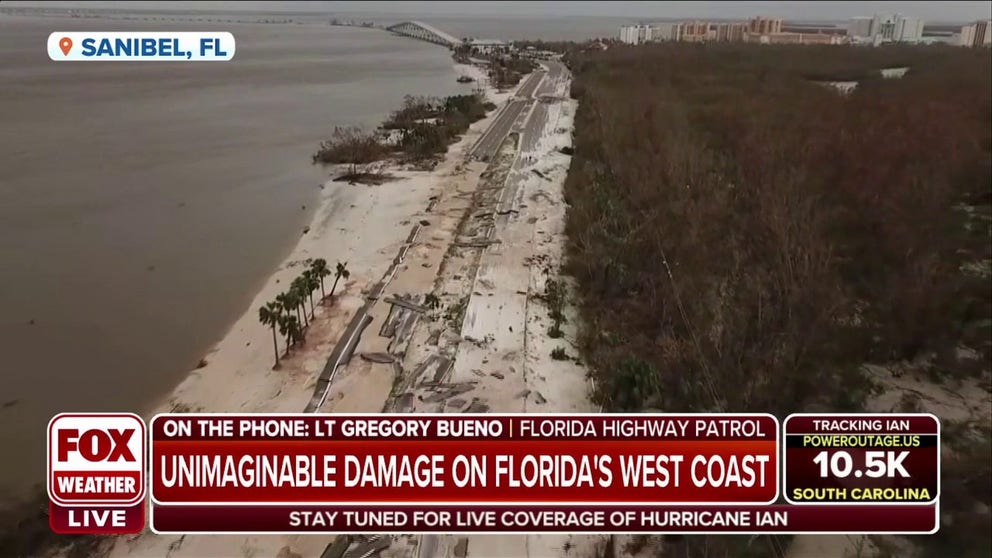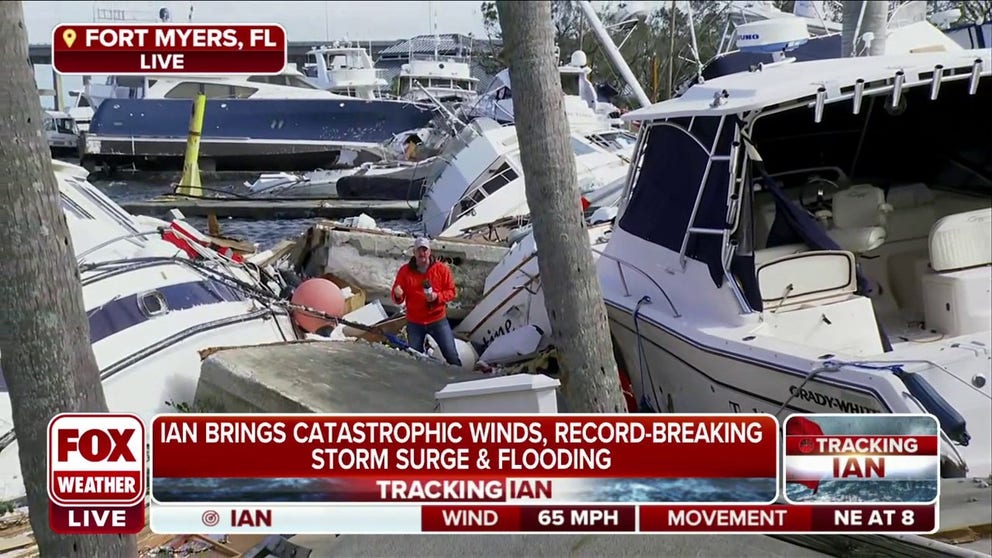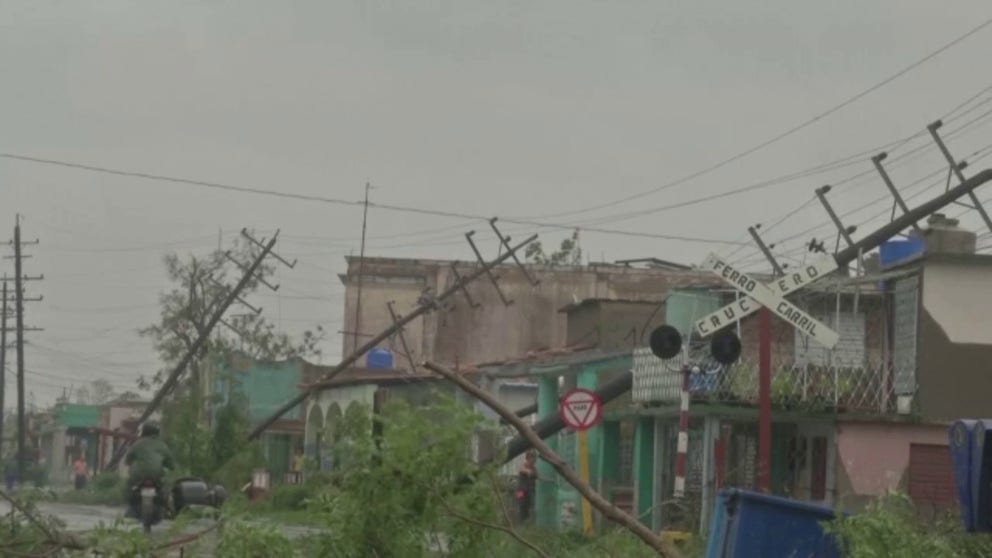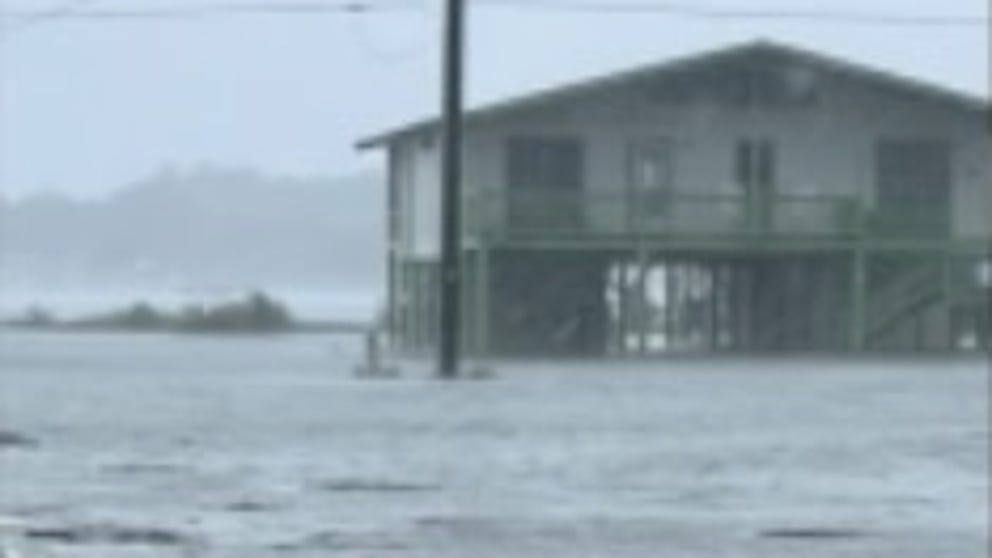Images reveal the path of destruction left from Hurricane Ian
People are working on picking up the pieces as Hurricane Ian left a trail of destruction from Florida to North Carolina. See the most devastating images and videos from the destruction in Florida and South Carolina.
See the devastating scale of Ian's destruction in Florida
FOX Weather's Robert Ray explains the staggering levels of devastation left behind by Hurricane Ian along Florida's Gulf Coast.
People are working on picking up the pieces as Hurricane Ian left a trail of destruction from Florida to North Carolina.
As first responders reach the hardest hit areas, the death toll continues to climb.
Major storm surge from Ian sweeps away homes in Fort Myers
More than 12 feet of storm surge caused by Hurricane Ian is captured moving homes away from their foundations in Fort Myers, Florida. (Video: Max Olson / LSM)
The economic cost of Hurricane Ian could easily put the hurricane on the list of the top 10 costliest U.S. storms.
The hardest hit area was in Florida, where Hurricane Ian made landfall Wednesday afternoon near Cayo Costa, Florida, as a catastrophic Category 4 storm with winds of 150 mph.
Fort Myers during landfall
A storm chaser caught the violent wind, rain and waves from a high-rise in Ft. Myers as powerful Category 4 Hurricane Ian made landfall just to the north. Watch a boat that broke free adrift.
Those winds pushed massive amounts of water onshore from the Gulf of Mexico, flooding homes and washing away roads and bridges needed to access beachfront locations.
More than 2.5 million Floridians were left without power as the storm rolled through the state.
Unimaginable damage on Florida's west coast due to Hurricane Ian
Lieutenant Gregory Bueno with Florida Highway Patrol talks about search and rescue efforts taking place across Florida after Hurricane Ian.
Hurricane Ian tossed boats around like toys at a marina on the shores of Fort Myers.
Boats tossed and turned from Hurricane Ian's storm surge in Fort Myers
FOX Weather's Robert Ray spoke to Fort Myers resident Bob Benham, who says this was the strongest weather he has ever seen.
"The docks started weaving … and then they started separating, and boats were tied to the docks, they didn’t separate from the docks, and they all started to just piling up like Tinkertoys," Fort Myers resident Bob Benham said. "It was pretty amazing."
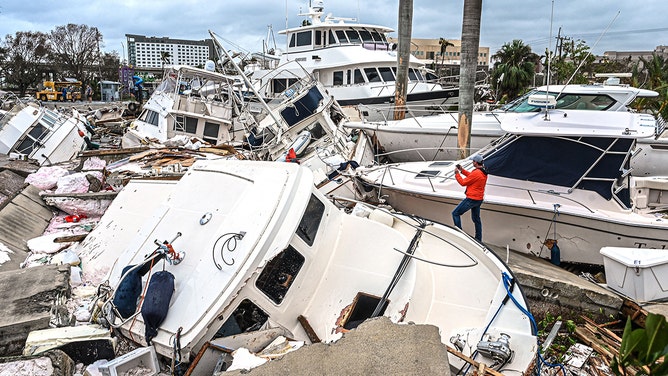
A man takes photos of boats damaged by Hurricane Ian in Fort Myers, Florida, on September 29, 2022.
(GIORGIO VIERA/AFP / Getty Images)
Several well-known landmarks, including the Fort Myers Pier, Captiva Island and Sanibel Island Causeway fell victim to Ian's deadly storm surge.

Aerial images show the extent of the damages to the Fort Myers Beach Pier from Hurricane Ian.
Hurricane Ian left destruction scars that would be seen from space.
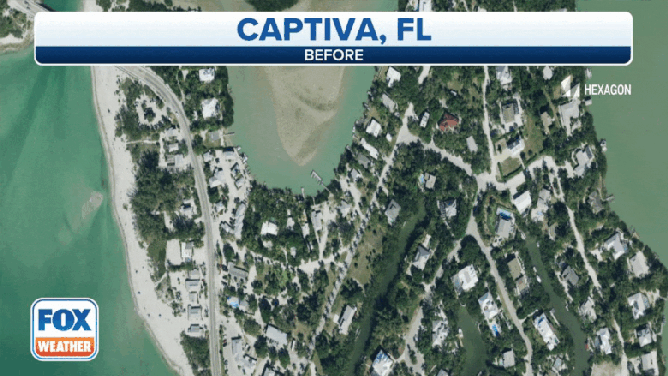
Before and after satellite images of Captiva Island and Sanibel Island show the damage left by Hurricane Ian. (Image: NOAA/FOX Weather)
A popular beachfront restaurant, the Salty Crab, was blasted with winds over 100 mph, and storm surge left the establishment destroyed.
"Not only is our restaurant completely totaled, but we have employees that lost everything," says Julia Cassino with the Salty Crab Bar and Grill in Fort Myers.
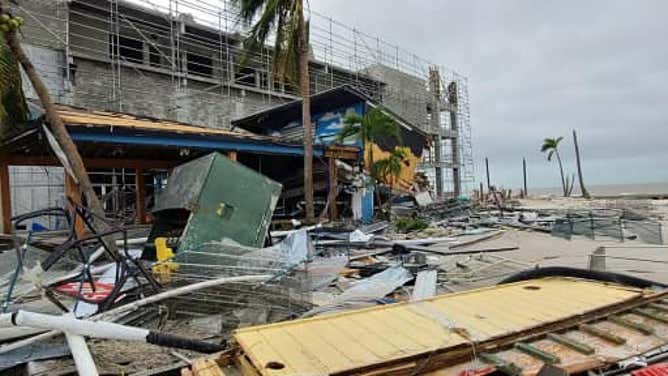
The Salty Crab Bar and Grill sustains heavy damage after Hurricane Ian.
(Salty Crab Bar & Grill)
And while others came back to their homes to see the same destruction, many know that it'll be years before they can get back to normal.
'All the people that can move mountains' in Florida to help those in need following Ian's destruction
Ian caused historic damage to southwest Florida, decimating homes and roadways and leaving countless people with nothing. In his own words, Lee County Sheriff Carmine Marceno explains how emergency teams are responding and helping those in need.
History of Ian
Watch: Hurricane Ian damage in Cuba
Widespread damage in Cuba from Hurricane Ian. Video captures roofs having collapsed, flooded homes, and fallen trees. (Credit: Reuters)
In its first landfall, Ian hit the town of La Coloma in the Pinar del Rio Province of Cuba at 4:30 a.m. Eastern time on Tuesday. The maximum sustained winds of the Category 3 hurricane at landfall were estimated to be 125 mph.
After leaving a trail of destruction and causing an island-wide blackout, Hurricane Ian made its way into the warm Gulf of Mexico waters, where it continued strengthening.
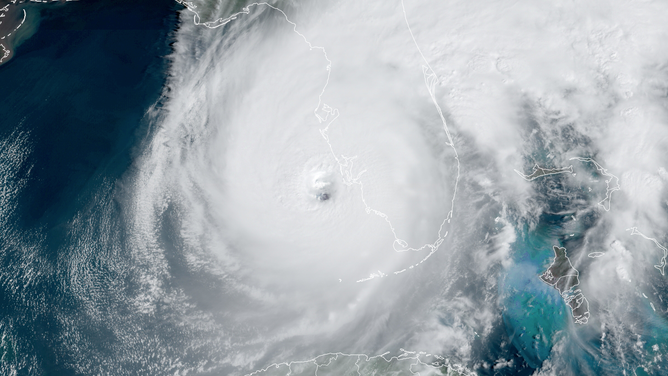
Hurricane Ian approaches the Florida coast near landfall at Fort Myers on Sept. 28, 2022.
(NOAA / CIRA / RAMM-B)
On Wednesday, Hurricane Ian pummeled Southwest Florida after making two catastrophic landfills.
Ian was a monstrous Category 4 hurricane storm with 150-mph winds when it first came ashore on Cayo Costa, Florida, about 3 p.m. Wednesday.
About 90 minutes later, the hurricane made a second Florida landfall, just south of Punta Gorda, with 145-mph winds.
Hurricane Ian leaves widespread destruction across Florida
Residents are picking up the pieces after Hurricane Ian ripped through Florida earlier this week.
The storm continued to trek through the Florida Peninsula, bringing flooding rains to Orlando and other parts of the Sunshine State. The storm left more than 2.5 million customers without power.
After downgrading to a tropical storm in Northeast Florida, Ian spun its way into the Atlantic with its eyes set on the Carolina coast.
South Carolina road conditions deteriorating due to Hurricane Ian
Hurricane Ian floods roads in South Carolina.
On Thursday, Ian regained hurricane strength and brought life-threatening storm surge to South Carolina.
With its last U.S. landfall, Ian arrived in South Carolina as a Category 1 hurricane with 85-mph winds and a central pressure of 977 millibars.
Pawleys Island, South Carolina seeing major flooding from Hurricane Ian
Pawleys Island, South Carolina seeing is seeing major flooding from Hurricane Ian.
